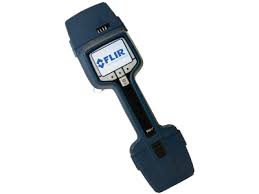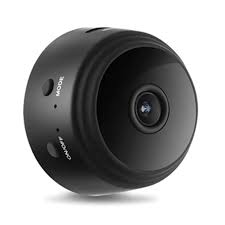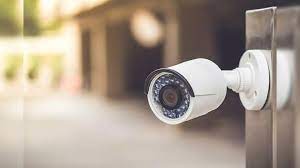Explosive detectors are an essential tool for law enforcement agencies and security personnel in detecting and preventing explosive threats. These devices are designed to detect traces of explosives or explosive materials, which could be used in a variety of criminal activities, including terrorism.
There are various types of explosive detectors available in the market, ranging from handheld devices to large-scale machines. Some of these detectors use chemical reactions to detect explosives, while others use X-ray technology or trace detection methods.
Handheld explosive detectors are commonly used by security personnel at airports, train stations, and other public places. These devices work by analyzing the air around an object or person and detecting any traces of explosive materials that may be present. They are easy to use and can quickly identify potential threats.
Larger scale explosive detection machines are often used at border crossings and other high-security locations. These machines use X-ray technology to scan vehicles and cargo containers for any signs of explosives or other dangerous materials. They can also detect hidden compartments where explosives may be concealed.
Trace detection methods involve collecting samples from surfaces that may have come into contact with explosives. These samples are then analyzed using specialized equipment that can detect even the smallest traces of explosive material.
One challenge with explosive detection is the fact that there are many different types of explosives, each with its own unique chemical composition. This means that no single detector can detect all types of explosives. However, modern detectors have become increasingly sophisticated and can detect a wide range of different explosive materials.
Overall, explosive detectors play a critical role in maintaining public safety and preventing acts of terrorism. As technology continues to advance, we can expect to see even more advanced and effective detectors being developed to keep us safe from this ongoing threat.
9 Essential Tips for Maintaining and Operating Explosive Detectors
- Check the detector regularly for signs of wear and tear.
- Ensure that all personnel operating the explosive detectors are properly trained and certified in its use.
- Regularly maintain and calibrate your explosive detectors to ensure they are working correctly.
- Make sure to follow the manufacturer’s instructions for proper use of the explosive detector, including any safety protocols or guidelines that may be included with it.
- Store explosive detectors in a secure location when not in use to prevent unauthorized access or tampering with them.
- Use an appropriate power source (such as a battery) for your explosive detector, as specified by the manufacturer’s instructions, to ensure optimal performance and avoid any damage due to overloading or incorrect voltage levels being used on the device itself
- Check for any environmental conditions that may interfere with the accuracy of readings given by your explosive detector, such as extreme temperatures or humidity levels outside of what is recommended by its manufacturer
- Make sure you have adequate spare parts available should you need to replace any components on your device
- Always keep up-to-date with any new developments in technology related to explosives detection so you can stay ahead of potential threats
Check the detector regularly for signs of wear and tear.
When it comes to explosive detectors, regular maintenance and upkeep are crucial to ensure that the device is functioning properly. One important tip for maintaining an explosive detector is to check it regularly for signs of wear and tear.
Over time, even the most durable and high-quality detectors can begin to show signs of wear and tear. This can include scratches on the surface of the device, cracks in the casing, or other physical damage. These issues can not only affect the accuracy of the detector but also compromise its overall durability.
Regularly inspecting your explosive detector for signs of wear and tear can help you identify any potential issues early on. By catching these issues before they become more serious, you can take steps to repair or replace the detector as needed.
In addition to checking for physical damage, it’s also important to regularly calibrate your explosive detector. Calibration ensures that the device is accurately detecting explosives and other dangerous materials. If you notice any discrepancies in readings or suspect that your detector may be malfunctioning, it’s important to have it serviced by a professional as soon as possible.
By taking these simple steps to maintain your explosive detector, you can ensure that it remains an effective tool for detecting potential threats and keeping yourself and others safe from harm.
Ensure that all personnel operating the explosive detectors are properly trained and certified in its use.
When it comes to explosive detectors, proper training and certification are crucial for ensuring their effective use. Explosive detection is a highly specialized field that requires a thorough understanding of the technology and its limitations.
It is important to ensure that all personnel who operate explosive detectors are properly trained and certified in their use. This includes security personnel at airports, train stations, and other public places where explosive threats may be present.
Proper training should cover topics such as how to properly operate the detector, how to interpret the results, and what actions to take if an explosive threat is detected. It should also include training on safety procedures to follow in case of an emergency.
Certification provides assurance that the operator has demonstrated proficiency in using the detector and has met certain standards of competence. Certification may be required by regulatory bodies or government agencies as a condition for operating explosive detectors.
In addition to providing peace of mind that trained professionals are operating these sensitive devices, proper training and certification can also help minimize false alarms and reduce the risk of unnecessary disruption or delays.
Ultimately, ensuring that all personnel operating explosive detectors are properly trained and certified is critical for maintaining public safety in today’s world. By investing in proper training and certification programs for those who operate these devices, we can help ensure that they are used effectively and responsibly.
Regularly maintain and calibrate your explosive detectors to ensure they are working correctly.
Maintaining and calibrating explosive detectors is essential to ensure that they are functioning correctly and accurately detecting explosives. Regular maintenance can help prevent malfunctions or false alarms, which can lead to unnecessary disruptions and delays.
The calibration process involves adjusting the detector’s settings to ensure that it is detecting explosives at the correct sensitivity level. This process should be done periodically, as the detector’s sensitivity may change over time due to environmental factors or wear and tear.
Regular maintenance can also help identify any issues with the detector before they become a problem. For example, if a component is worn out or damaged, it may not function correctly, leading to inaccurate readings or false alarms. By catching these issues early on, you can avoid costly repairs or replacements down the line.
In addition to regular maintenance and calibration, it’s also essential to follow the manufacturer’s guidelines for proper use and storage of explosive detectors. This includes storing them in a cool, dry place away from direct sunlight and avoiding exposure to extreme temperatures or humidity.
By taking these steps to maintain and calibrate your explosive detectors regularly, you can ensure that they are working correctly when you need them most. This will not only help keep you safe but also provide peace of mind knowing that your security equipment is functioning as intended.
Make sure to follow the manufacturer’s instructions for proper use of the explosive detector, including any safety protocols or guidelines that may be included with it.
When it comes to using explosive detectors, it is important to follow the manufacturer’s instructions carefully. This includes any safety protocols or guidelines that may be included with the device.
Explosive detectors are powerful tools that require proper handling and use to ensure their effectiveness and safety. The manufacturer’s instructions will provide guidance on how to properly operate the detector, including how to calibrate it, how to interpret results, and what safety precautions should be taken.
It is also important to regularly maintain and service your explosive detector as recommended by the manufacturer. This will help ensure that it continues to function properly and accurately detect explosives.
By following the manufacturer’s instructions for proper use of your explosive detector, you can help ensure its effectiveness in detecting potential threats while also minimizing any risks associated with its use. So take the time to read through the instructions carefully and make sure you understand how to use your device safely and effectively.
Store explosive detectors in a secure location when not in use to prevent unauthorized access or tampering with them.
Explosive detectors are an important tool for law enforcement and security personnel to detect and prevent explosive threats. However, it is equally important to ensure that these devices are stored securely when not in use. This helps prevent unauthorized access or tampering with the detectors.
When storing explosive detectors, it is important to keep them in a secure location that is only accessible to authorized personnel. This could be a locked cabinet or room with limited access. It is also important to keep an inventory of the detectors and monitor their usage.
Unauthorized access or tampering with explosive detectors can have serious consequences, including compromising security measures and potentially putting lives at risk. Therefore, it is crucial to take all necessary precautions to ensure that these devices are stored safely and securely when not in use.
In addition to storing the detectors securely, it is also important to regularly inspect them for any signs of damage or malfunction. This can help ensure that they are functioning properly when needed and can help prevent false alarms or missed threats.
Overall, storing explosive detectors in a secure location when not in use is an essential step in maintaining their effectiveness and preventing unauthorized access or tampering. By taking these precautions, we can help ensure that these critical tools are ready and available when needed to protect public safety.
Use an appropriate power source (such as a battery) for your explosive detector, as specified by the manufacturer’s instructions, to ensure optimal performance and avoid any damage due to overloading or incorrect voltage levels being used on the device itself
When it comes to using explosive detectors, it’s important to ensure that you’re using the right power source for the device. This means using a battery or other power source that is specifically recommended by the manufacturer in order to ensure optimal performance and avoid any damage due to overloading or incorrect voltage levels.
Using the wrong power source can not only damage the detector itself but also lead to inaccurate readings, which could put people at risk. For example, if a detector is not receiving enough power, it may not be able to detect explosives effectively, while too much power could cause the device to malfunction or even explode.
To avoid these risks, always check the manufacturer’s instructions for your explosive detector and use the recommended power source. If you’re unsure about which type of battery or other power source to use, consult with an expert or contact the manufacturer directly for guidance.
By taking these simple precautions and using an appropriate power source for your explosive detector, you can help ensure that it performs optimally and keeps you safe from potential threats.
Check for any environmental conditions that may interfere with the accuracy of readings given by your explosive detector, such as extreme temperatures or humidity levels outside of what is recommended by its manufacturer
When it comes to using explosive detectors, accuracy is absolutely critical. However, there are certain environmental conditions that can interfere with the accuracy of readings given by these devices. That’s why it’s important to always check for any such conditions before using your explosive detector.
One factor that can affect the accuracy of an explosive detector is temperature. Extreme temperatures, whether hot or cold, can cause the device to malfunction or give inaccurate readings. It’s important to check the manufacturer’s recommendations for operating temperature ranges and avoid using the device outside of those ranges.
Humidity levels can also have an impact on the accuracy of an explosive detector. High humidity levels can cause moisture to build up on the device’s sensors, which can interfere with its ability to detect explosives. Again, it’s important to check the manufacturer’s recommendations for humidity levels and avoid using the device in environments where humidity levels are outside of those ranges.
Other environmental factors that may affect an explosive detector include electromagnetic interference from other devices or sources, as well as dust or other airborne particles that may accumulate on the device over time.
By taking these environmental factors into account and following the manufacturer’s recommendations for operating conditions, you can help ensure that your explosive detector is functioning properly and providing accurate readings when you need it most.
Make sure you have adequate spare parts available should you need to replace any components on your device
When it comes to explosive detectors, having adequate spare parts available is crucial. These devices are complex machines that require regular maintenance and occasional repairs. If a component fails and you don’t have a spare part available, it could mean that your detector is out of commission until the replacement part arrives.
To avoid this situation, it’s important to keep a stock of spare parts on hand. This includes everything from batteries and power cords to sensors and circuit boards. By having these parts readily available, you can quickly replace any components that fail and get your detector back up and running in no time.
It’s also important to make sure that you purchase high-quality spare parts from a reputable supplier. Using cheap or low-quality parts can result in poor performance or even damage to your device.
In addition to keeping spare parts on hand, it’s also a good idea to have a regular maintenance schedule for your explosive detector. This can help prevent component failures before they happen and ensure that your device is always operating at peak performance.
Overall, having adequate spare parts available is an essential aspect of maintaining an effective explosive detector. By being prepared for any potential repairs or replacements, you can ensure that your device is always ready when you need it most.
Always keep up-to-date with any new developments in technology related to explosives detection so you can stay ahead of potential threats
In today’s world, where the threat of terrorism and other forms of violence is a constant concern, it is essential to stay up-to-date with the latest developments in technology related to explosives detection. As new types of explosives are developed and new methods for hiding them are discovered, it is crucial to have cutting-edge technology in place to detect and prevent potential threats.
By staying informed about new developments in explosive detectors, you can stay ahead of potential threats and ensure that you are taking all necessary precautions to keep yourself and those around you safe. This means keeping an eye on industry news, attending conferences and seminars on the topic, and regularly checking for updates from manufacturers on new products or features.
In addition to keeping up-to-date with technology developments, it is also important to ensure that your existing detection equipment is properly maintained and calibrated. Regular testing can help identify any issues or weaknesses in your system so that they can be addressed before they become a problem.
Ultimately, investing in high-quality explosive detection technology and staying informed about new developments in the field is essential for maintaining public safety. By taking these steps, we can help protect ourselves and our communities from the ongoing threat of terrorism and other forms of violence.




